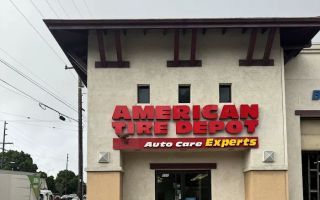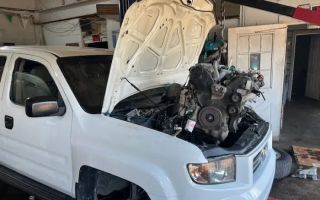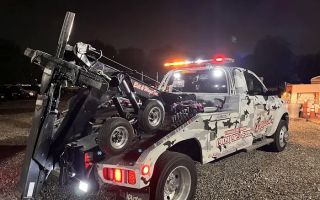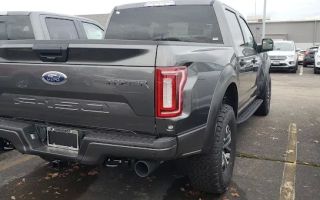How Towing Services Help with Towing Long Vehicles Like Buses: A Guide to Safe and Efficient Bus Towing
- 1. Understanding the Challenges of Towing Long Vehicles Like Buses
- 2. Importance of Specialized Towing Equipment for Buses
- 3. Steps Involved in Towing a Bus Safely and Efficiently
- 4. Safety Measures During Bus Towing
- 5. Choosing the Right Towing Service for Bus Towing
- 6. Real-Life Examples of Bus Towing
1. Understanding the Challenges of Towing Long Vehicles Like Buses
Towing a long vehicle like a bus comes with its own set of unique challenges. Unlike smaller cars, buses have a much larger size, heavier weight, and longer length, which makes them more difficult to tow safely and efficiently. These vehicles often require specialized equipment and expertise to ensure that they are handled correctly during the towing process. Whether the bus is stuck on the side of the road due to a mechanical failure, or it needs to be relocated for maintenance or an event, proper towing is essential to avoid damage and ensure safety.
Bus towing requires knowledge of the vehicle's structure, including its suspension and alignment. Additionally, the increased length and weight of buses mean that standard towing vehicles and methods aren’t always sufficient. Specialized towing services are crucial to ensure that the bus is transported securely, without causing any damage to either the bus or other vehicles on the road.
2. Importance of Specialized Towing Equipment for Buses
Towing a bus is not a job for every tow truck; it requires specialized equipment designed to handle the size and weight of long vehicles. Some of the critical equipment needed includes:
- Heavy-duty Tow Trucks: These trucks are equipped with a powerful winch and a large towing capacity, designed to tow heavy vehicles like buses without straining the system. They typically have extended arms and specialized straps to secure the vehicle.
- Flatbed Trucks: Flatbed trucks are commonly used for towing buses because they allow the bus to be loaded onto the bed of the truck for secure transportation. This method is especially useful for buses that cannot be driven due to mechanical issues.
- Wheel-Lift Tow Trucks: These trucks use a hydraulic lift to raise the bus's wheels off the ground, allowing it to be towed safely while the other wheels remain on the ground or on the flatbed.
Using the right equipment is essential to ensure that the bus is not damaged during towing. It also ensures the safety of other drivers and pedestrians on the road, as improperly secured vehicles can pose significant risks.
3. Steps Involved in Towing a Bus Safely and Efficiently
The process of towing a bus involves several critical steps to ensure that the vehicle is safely moved from one location to another. Here’s a step-by-step breakdown of what’s typically involved in towing a bus:
- Assessment of the Bus: Before towing, the towing service will assess the condition of the bus. This includes checking whether the bus is operable, its alignment, and its overall condition to determine the best method for towing.
- Securing the Bus: If the bus is being towed using a flatbed, the towing service will load the bus onto the truck and secure it using heavy-duty straps and chains. If a wheel-lift system is used, the tow truck will lift the wheels of the bus and ensure they are properly locked in place.
- Safe Transport: Once the bus is secure, the tow truck will transport the bus to its destination. During transport, the towing service will ensure the bus is balanced and doesn’t shift, which could cause damage to the vehicle or other road users.
- Unloading: Upon reaching the destination, the bus will be safely unloaded, either onto a parking lot or directly into a repair facility, depending on the purpose of the tow.
By following these steps, towing services ensure that buses are moved without incident and that they arrive safely at their intended destination.
4. Safety Measures During Bus Towing
Safety is paramount when towing a long vehicle like a bus. Several safety measures should be in place to protect both the towing crew and other drivers on the road:
- Proper Securing of the Bus: Ensuring the bus is securely fastened to the tow truck is critical. Loose straps or improper loading can cause the bus to shift or fall off the truck during transport.
- Road Safety: Towing services should always follow proper road safety regulations, including using appropriate signage and lights to alert other drivers about the towing operation.
- Vehicle Inspection: The tow truck and the bus must be thoroughly inspected before towing. Ensuring that both vehicles are in proper working condition reduces the likelihood of accidents or damage during the tow.
- Clear Communication: Communication between the towing crew and traffic control is essential for safely managing the towing operation, especially on busy highways or roads with heavy traffic.
By following these safety measures, towing services reduce the risk of accidents, ensuring that the bus is transported without incident.
5. Choosing the Right Towing Service for Bus Towing
Not all towing services are equipped to handle the unique requirements of towing buses. Here are some factors to consider when choosing a towing service for your bus:
- Specialization in Heavy Duty Towing: Choose a towing service with experience in towing large, heavy vehicles like buses. A company that specializes in heavy-duty towing is more likely to have the necessary equipment and expertise to do the job right.
- Availability and Response Time: Look for a towing service that offers 24/7 availability, as buses may break down or require towing at any time of day or night.
- Customer Reviews and Reputation: Check customer reviews and ratings to see if the towing service has a reputation for professionalism, reliability, and safety. A well-established company will likely have a track record of successful bus towing.
- Pricing and Transparency: Make sure the towing service offers clear, upfront pricing. Ask for a quote and inquire about any potential hidden fees before booking the service.
By selecting a reputable and reliable towing service, you ensure that your bus is towed safely and efficiently, with minimal risk of damage or delay.
6. Real-Life Examples of Bus Towing
In real-world scenarios, towing buses can present challenges that require expertise and proper equipment. For instance, a popular tour bus company experienced a breakdown while traveling across a remote area. The towing service arrived with a heavy-duty tow truck and used a flatbed to transport the bus to the nearest service station. The service team made sure that the bus was securely loaded and followed safety measures to avoid any accidents on the way.
Another case involved a city bus that broke down during rush hour. The towing company used a wheel-lift tow truck to safely transport the bus without disrupting traffic. The timely response ensured that the bus was quickly moved, and passengers were safely accommodated during the delay.
These examples illustrate how professional towing services can handle complex towing situations, ensuring buses are moved safely and efficiently, no matter the circumstances.
If you’re in need of reliable and professional towing services for your bus, consider contacting Rescue & Towing for expert assistance. Our team specializes in handling large vehicles like buses with care and precision, ensuring a safe and efficient towing experience every time.




























